
Geckos are small lizards belonging to the infraorder Gekkota, found in warm climates throughout the world. They range from 1.6 to 60 cm (0.64 to 24 inches). Most geckos cannot blink, but they often lick their eyes to keep them clean and moist. They have a fixed lens within each iris that enlarges in darkness to let in more light.
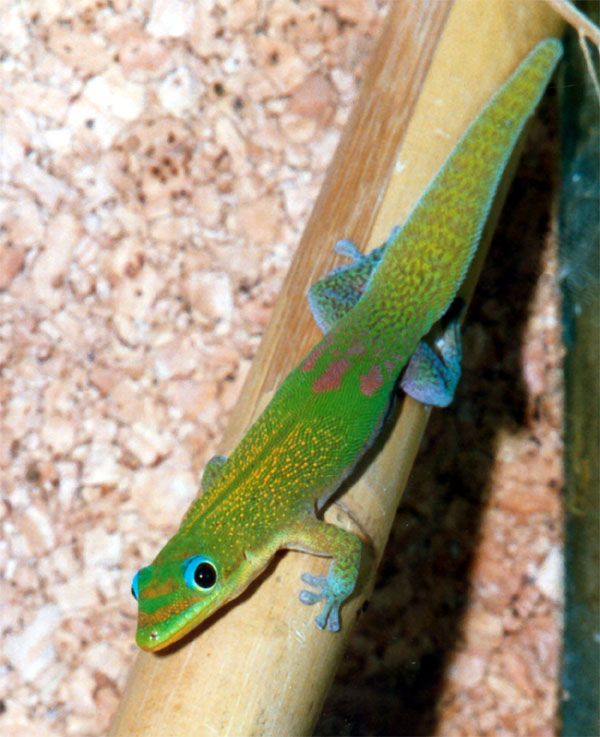
Gold dust day geckolicking its cornea to clear it of dust
Geckos are unique among lizards for their vocalizations, which differs from species to species. Most geckos in the family Gekkonidae use chirping or clicking sounds in their social interactions, tokay geckos (Gekko gecko) are known for their loud mating calls,
and some other species are capable of making hissing noises when
alarmed or threatened. They are the most species-rich group of lizards,
with about 1,500 different species worldwide.[2] The New Latin gekko and English "gecko" stem from the Indonesian-Malay gēkoq, which is imitative of sounds that some species make.[3]
All geckos except species in the family Eublepharidae lack eyelids; instead, the outer surface of the eyeball has a transparent membrane, the cornea. Species without eyelids generally lick their own corneas when they need to clear them of dust and dirt.[4]
Nocturnal species have excellent night vision; their color vision
in low light is 350 times more sensitive than human color vision.[5]
The nocturnal geckos evolved from diurnal species, which had lost the
eye rods. The gecko eye, therefore, modified its cones that increased in
size into different types, both single and double. Three different
photopigments have been retained and are sensitive to UV, blue, and
green. They also use a multifocal optical system that allows them to
generate a sharp image for at least two different depths.[6][7]
Like most lizards, geckos can lose their tails in defense, a process called autotomy.[8]
Many species are well known for their specialised toe pads that enable
them to climb smooth and vertical surfaces, and even cross indoor
ceilings with ease. Geckos are well known to people who live in warm
regions of the world, where several species make their home inside human
habitations. These (for example the house gecko) become part of the indoor menagerie and are often welcomed, as they feed on insects, including moths and mosquitoes. Unlike most lizards, geckos are usually nocturnal.
The largest species, the kawekaweau,
is only known from a single, stuffed specimen found in the basement of a
museum in Marseille, France. This gecko was 60 cm (24 in) long and it
was likely endemic to New Zealand,
where it lived in native forests. It was probably wiped out along with
much of the native fauna of these islands in the late 19th century, when
new invasive species such as rats and stoats were introduced to the country during European colonization. The smallest gecko, the Jaragua sphaero, is a mere 1.6 cm long and was discovered in 2001 on a small island off the coast of the Dominican Republic.[9]
Common traits
Like other reptiles, geckos are ectothermic,[10] producing very little metabolic heat. Essentially, a gecko's body temperature is dependent on its environment. Also, to accomplish their main functions—such as locomotion, feeding, reproduction, etc.—geckos must have a relatively elevated temperature.[10]Shedding or molting
Adhesion ability
The spatula-shaped setae arranged in lamellae on gecko footpads enable attractive van der Waals' forces (the weakest of the weak chemical forces) between the β-keratin lamellae/setae/spatulae structures and the surface.[14][15] These van der Waals interactions involve no fluids; in theory, a boot made of synthetic setae would adhere as easily to the surface of the International Space Station as it would to a living-room wall, although adhesion varies with humidity.[16][17]
A recent study has however shown that gecko adhesion is in fact mainly determined by electrostatic interaction (caused by contact electrification), not van der Waals or capillary forces.[18]
The setae on the feet of geckos are also self-cleaning and usually remove any clogging dirt within a few steps.[19][20] [21] Teflon, which has very low surface energy,[22] is more difficult for geckos to adhere to than many other surfaces.
Gecko adhesion is typically improved by higher humidity,[16][17][23][24][25] even on hydrophobic surfaces, yet is reduced under conditions of complete immersion in water. The role of water in that system is under discussion, yet recent experiments agree that the presence of molecular water layers (water molecules carry a very large dipole moment) on the setae, as well as on the surface, increase the surface energy of both, therefore the energy gain in getting these surfaces in contact is enlarged, which results in an increased gecko adhesion force.[16][17][23][24][25] Moreover, the elastic properties of the b-keratin change with water uptake.[16][17][23]
Gecko toes seem to be "double jointed", but this is a misnomer and is properly called digital hyperextension.[26] Gecko toes can hyperextend in the opposite direction from human fingers and toes. This allows them to overcome the van der Waals force by peeling their toes off surfaces from the tips inward. In essence, by this peeling action, the gecko separates spatula by spatula from the surface, so for each spatula separation, only some force necessary. (The process is similar to removing Scotch Tape from a surface.)
Geckos' toes operate well below their full attractive capabilities most of the time because the margin for error is great depending upon the surface roughness, and therefore the number of setae in contact with that surface.
The setae of a typical mature 70 g (2.5 oz) gecko would be capable of supporting a weight of 133 kg (293 lb):[28][29] each spatula can exert an adhesive force of 5 to 25 nN.[23][30] The exact value of the adhesion force of a spatula varies with the surface energy of the substrate to which it adheres. Recent studies [25][31] have moreover shown that the component of the surface energy derived from long-range forces, such as van der Waals forces, depends on the material's structure below the outermost atomic layers (up to 100 nm beneath the surface); taking that into account, the adhesive strength can be inferred.
Apart from the setae, phospholipids—fatty substances produced naturally in their bodies—also come into play.[32] These lipids lubricate the setae and allow the gecko to detach its foot before the next step.
The origin of gecko adhesion likely started as simple modifications to the epidermis on the underside of the toes. This was recently discovered in the genus Gonatodes from South America.[33] Simple elaborations of the epidermal spinules into setae have enabled Gonatodes humeralis to climb smooth surfaces and sleep on smooth leaves.
Biomimetic technologies designed to mimic gecko adhesion could produce reusable self-cleaning dry adhesives with many applications. Development effort is being put into these technologies, but manufacturing synthetic setae is not a trivial material design task.
Skin

Gecko skin does not generally bear scales, but appears at a macro scale as a papillose surface which is made from hair-like protuberances developed across the entire body. These confer superhydrophobicity, and the unique design of the hair confers a profound antimicrobial action. These protuberances are very small, up to 4 microns in length, and tapering to a point.[34] Gecko skin has been observed to have an anti-bacterial property, killing gram-negative bacteria when it comes in contact with the skin.[35]
Teeth
Geckos are polyphyodonts and able to replace each of their 100 teeth every 3 to 4 months.[36] Next to the full grown tooth there is a small replacement tooth developing from the odontogenic stem cell in the dental lamina.[37] The formation of the teeth is pleurodont; they are fused (ankylosed) by their sides to the inner surface of the jaw bones. This formation is common in all species in the order Squamata.
Taxonomy and classification
- Family Carphodactylidae
- Family Diplodactylidae
- Family Eublepharidae
- Family Gekkonidae
- Family Phyllodactylidae
- Family Pygopodidae
- Family Sphaerodactylidae
Species
- Coleonyx variegatus, the western banded gecko, is native to the southwestern United States and northwest Mexico.
- Cyrtopodion brachykolon, the bent-toed gecko, is found in northwestern Pakistan; it was first described in 2007.
- Eublepharis macularius, the leopard gecko, is the most common gecko kept as a pet; it does not have adhesive toe pads and cannot climb the glass of a vivarium.
- Gehyra mutilata (Pteropus mutilatus), the stump-toed gecko, is able to vary its color from very light to very dark to camouflage itself; this gecko is at home in the wild, as well as in residential areas.
- Gekko gecko, the Tokay gecko, is a large, common, Southeast Asian gecko known for its aggressive temperament, loud mating calls, and bright markings.
- Hemidactylus is genus of geckos with many varieties.
- Hemidactylus frenatus, the common house gecko, thrives around people and human habitation structures in the tropics and subtropics worldwide.
- Hemidactylus garnotii, the Indo-Pacific gecko, is found in houses throughout the tropics, and has become an invasive species of concern in Florida and Georgia in the US.
- Hemidactylus mabouia, the tropical house gecko, Afro-American house gecko, or cosmopolitan house gecko, is a species of house gecko native to sub-Saharan Africa and also currently found in North, Central, and South America and the Caribbean.
- Hemidactylus turcicus, the Mediterranean house gecko, is frequently found in and around buildings, and is an introduced species in the US.
- Lepidodactylus lugubris, the mourning gecko, is originally an East Asian and Pacific species; it is equally at home in the wild and residential neighborhoods.
- Pachydactylus bibroni, Bibron's gecko, is native to southern Africa; this hardy arboreal gecko is considered a household pest.
- Phelsuma laticauda, the gold dust day gecko, is diurnal; it lives in northern Madagascar and on the Comoros. It is also an introduced species in Hawaii.
- Ptychozoon is a genus of arboreal geckos from Southeast Asia also known as flying or parachute geckos; they have wing-like flaps from the neck to the upper leg to help them conceal themselves on trees and provide lift while jumping.
- Rhacodactylus is genus of geckos native to New Caledonia.
- Rhacodactylus ciliatus (now assigned to the genus Correlophus), the crested gecko, was believed extinct until rediscovered in 1994, and is gaining popularity as a pet.
- Rhacodactylus leachianus, the New Caledonian giant gecko, was first described by Cuvier in 1829; it is the largest living species of gecko.
- Sphaerodactylus ariasae, the dwarf gecko, is native to the Caribbean Islands; it is the world's smallest lizard.
- Tarentola mauritanica, the crocodile or Moorish gecko, is commonly found in the Mediterranean region from the Iberian Peninsula and southern France to Greece and northern Africa; their most distinguishing characteristics are their pointed heads, spiked skin, and tails resembling those of a crocodile.
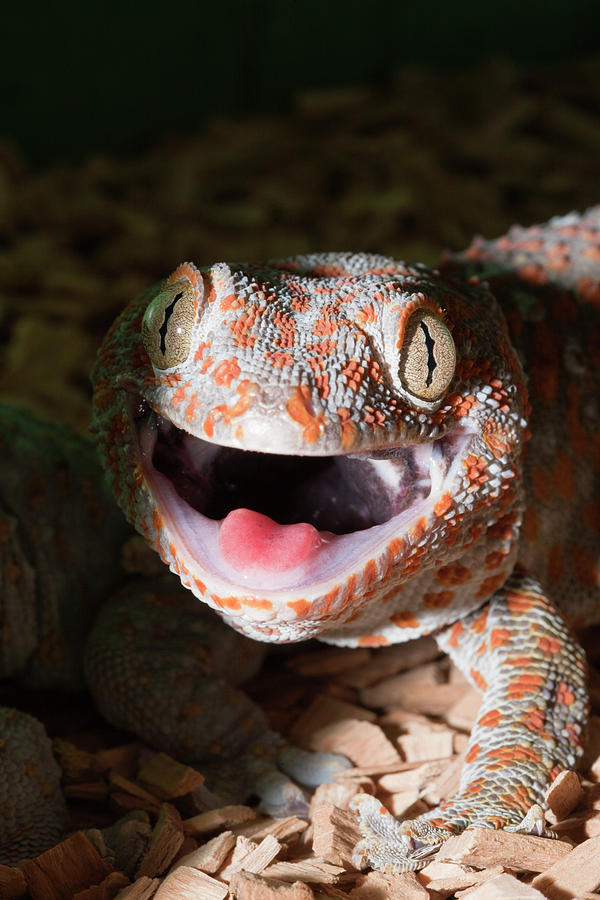
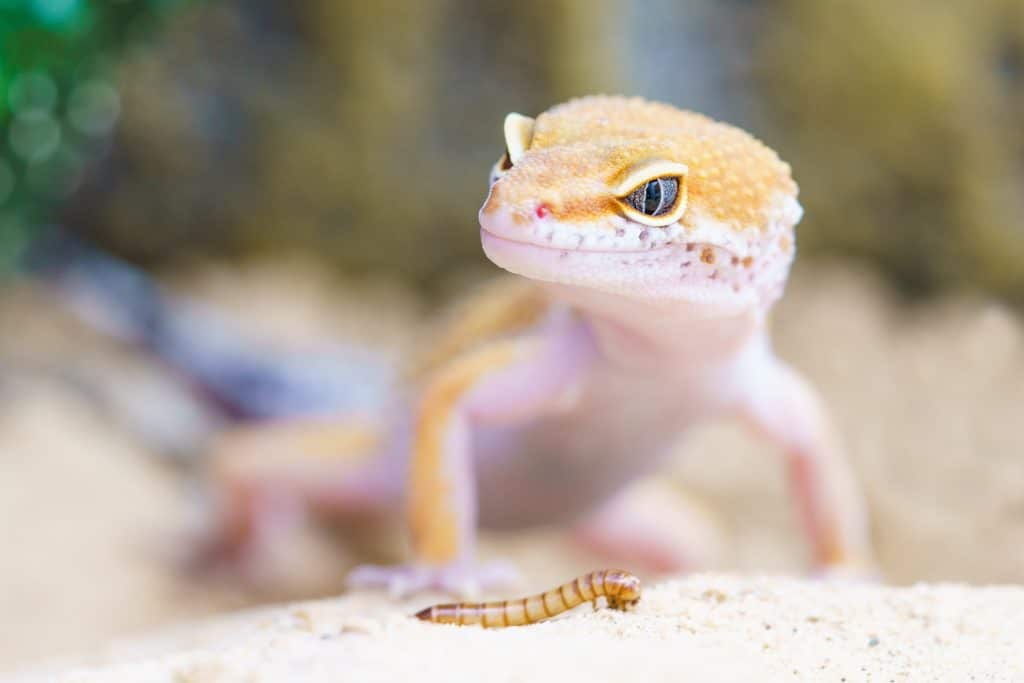




:strip_icc()/GettyImages-904215104-a4adafbc911549a4b5d5f01f97070490.jpg)


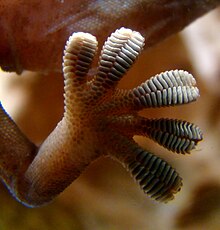


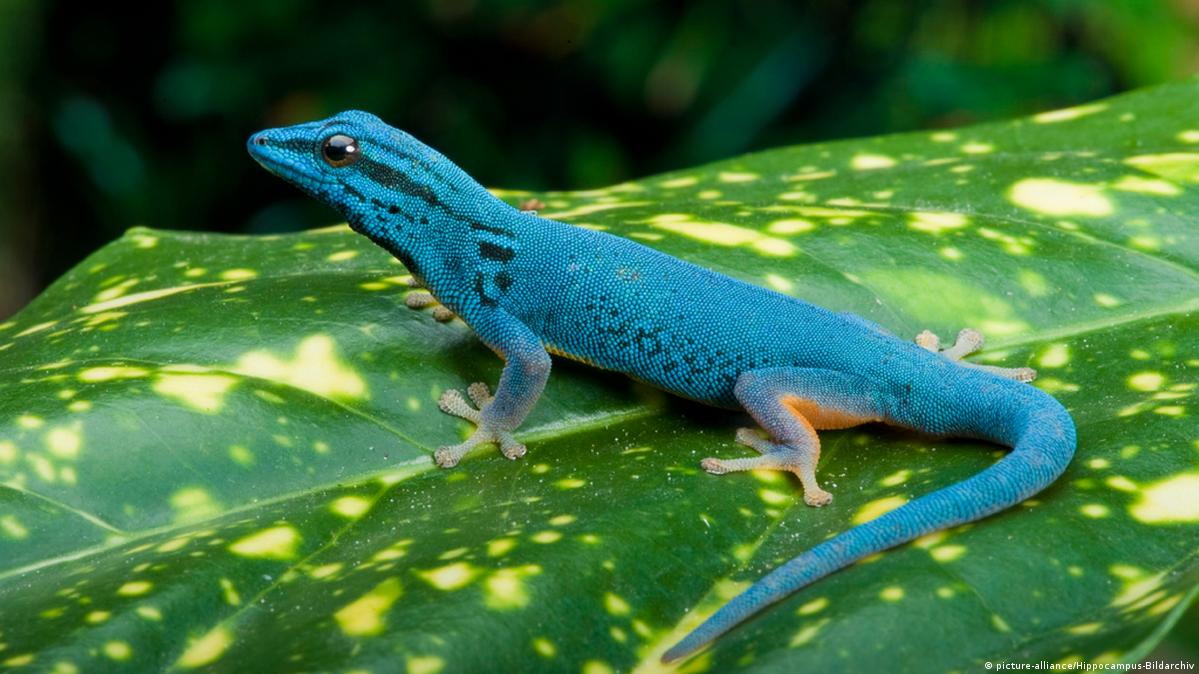
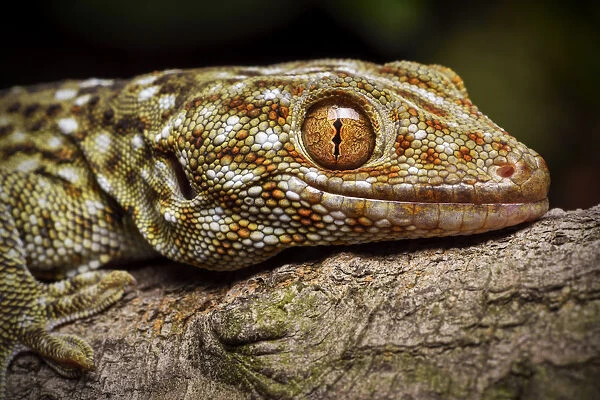
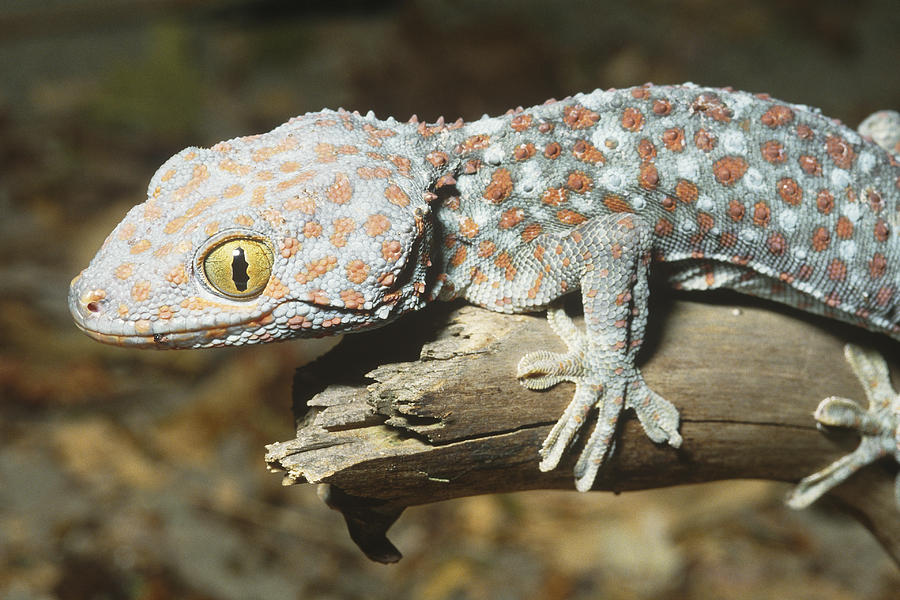

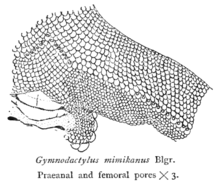

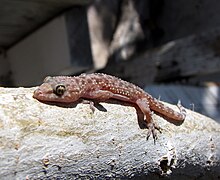

No comments:
Post a Comment
Note: Only a member of this blog may post a comment.